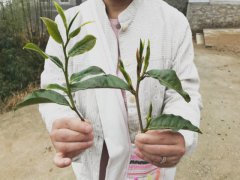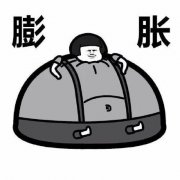What are the steps to make espresso from a cup of espresso
If you want to prepare an absolutely perfect espresso-a separate espresso-then you need to follow very specific instructions at each step.
Preheat Demitasse
Prepare coffee
Ground coffee
Preheat Espresso Portafilter
Positioning Demitasse
Fill Portafilter and tamp
Start brewing
Watch espresso
Aim at the best brewing time
Get the best quality without over-extraction
Troubleshooting
Espresso is just the grinding of coffee, and any single source of coffee can be roasted as long as the grinding allows appropriate extraction time.
Preheat DEMITASSE
The first thing you need to do is preheat the demitasse so that you can pour the espresso into it. Of course, you will need an espresso machine.
Prepare coffee
Prepare espresso beans, which, ideally, are high-quality coffee that is properly handled during the journey.
When you get the coffee, be sure to store it properly, keep it dry, and keep it in a cool place, but not in the refrigerator or freezer. It should also be kept in a dark place, because sunlight can damage the taste of coffee.
Grind coffee with a conical burr grinder
Be sure to use a burr coffee grinder to grind delicious coffee and do it before use. The best burr grinder is the conical burr grinder. One espresso requires about two tablespoons of coffee powder, or about 8 grams.
Preheat espresso machine PORTAFILTER
Before you start making espresso, be sure to preheat the coffee maker by running the filter of the espresso machine under hot water. Some espresso machines automatically heat the filter. This is important because if it is cold, the metal in the mobile filter lowers the brewing temperature of espresso, preventing it from being extracted correctly.

Positioning DEMITASSE
The best way to pour (pull out) espresso is to pour it directly from the pour port of the espresso machine into the preheated skimmed powder. Be sure to place it on the heating element until you are ready to use it, and then place it in place. Get ready to fill the filter with ground coffee.
Fill it with PORTAFILTER and mash the coffee powder
Use a very uniform twist when pushing down the coffee grounds to use a press bar to compact or compact the coffee grounds.
7. Start brewing espresso.
Once everything is ready and the brewing handle is sandwiched in the machine, the preheated degreasing solution is in place and the brewing handle is heated, then press the brewing button of the espresso machine.
8. Observe the espresso flow carefully.
In just a few seconds, brewed espresso will begin to flow out. The color of espresso should be very similar to that of maple syrup.
The art and science of espresso brewing now requires you to make very subtle calculations and decisions about the brewing time of espresso.
9. Determine the best brewing time as accurately as possible
Although the typical brewing time of espresso is 22 seconds, the actual time of your perfect single cup of espresso may vary depending on some factors. Most importantly, end the extraction process at the right time to avoid overextraction or underextraction of espresso. The key here is the proper grinding of coffee and the pressure used when mashing. Excessive tamping or grinding too fine will cause the water to pull too slowly because the water is blocked. Too fine grinding or insufficient tamping can lead to water coming out too fast because there is not enough contact time with coffee grounds.
10. Extract aromatic quality, but not much bitterness
The main thing to avoid is to extract too much bitterness from the ground coffee, but still make sure that the aromatic oil of the coffee is fully extracted and its delicacy. The general rule is that if you brew espresso for too short a time, you will not be able to give full play to its flavor, but if you brew for too long, you may extract too much bitterness and contaminate the individual espresso.
The resulting espresso should be a very concentrated espresso, free of water or light, and not too bitter. If the injection time for 30 milliliters (1 liquid ounce) is 20-25 seconds, then you are in the right field. Keep in mind that most of the "bitter" ingredients come from the end of the shot.
11. Diagnosis and troubleshooting of perfect espresso cup
The main factors that affect the brewing of your perfect espresso include: how much pressure your espresso machine produces, how hot the brewing temperature is, and how you grind your coffee (you use a burr grinder instead of a blade grinder, and how finely you grind your coffee). The best time to brew espresso depends on these factors. You need to be familiar with the three layers of Espresso-Crema, Body, and Heart.
Equally important are the initial quality of the coffee, the freshness of the coffee, whether it is stored correctly and whether the roaster has roasted the coffee for your espresso.
Make sure the coffee is recently roasted and transported in a valve-sealed bag. Grinding should be carried out before use.
Third, don't forget to preheat demitasse and portafilter. All these details are important for making high-quality espresso.
One thing to note is the acidity of coffee-low-acid coffee produces a rather insipid taste, while high-acidity espresso beans glow better.
Troubleshooting: ESPRESSO stream is too slow
Observe the flow of espresso from the spout. If the espresso flows too slowly, you may grind the coffee very fine, or you may compress it too much.
Changing one or both of these items can help fine-tune the lens so that it flows out correctly. If you let it flow very slowly, the result will be that espresso is overextracted, and it can be dark or bitter.
Troubleshooting: ESPRESSO stream is too fast
On the contrary, if the coffee is flowing through the mouth quickly, maybe you don't have tamped, or sufficiently compact coffee. Another thing to check is whether the size of the coffee particles you grind is too large.
Change one or both of them to fine-tune the espresso brewing so that it flows out of the spout correctly. If you let it flow too fast, it will cause water or weak shooting due to insufficient extraction.
Troubleshooting: check ESPRESSO layer by layer
When finished, the espresso will be about one and a half ounces, but when it is finished about 1/3, or only about 1/2 ounces, you will notice that the light brown grease layer will begin to form the top of the espresso.
Important Notice :
前街咖啡 FrontStreet Coffee has moved to new addredd:
FrontStreet Coffee Address: 315,Donghua East Road,GuangZhou
Tel:020 38364473
- Prev

What kind of tea does Yunnan old tree tea belong to? old tree tea or ancient tree tea? what is the price of good old tree tea?
A black tea that is different from any other tea tree and is made from an ancestral tea variety that grows only in forests found in western Yunnan. With a unique rich wildflower aroma, sweet aftertaste, without any heavy or astringent taste. The caffeine content is low, the nutrition content is high. This is a delicate and unique black tea made from high-quality tea, which is sure to attract connoisseurs and new tea drinkers.
- Next

How to solve the problem of steaming coffee by hand without drumming hamburger? influence on the flavor of steaming coffee
Steaming is the first stage of hand flushing with water to let the coffee powder exhaust and bulge a large hamburger. steaming also has an important effect on the flavor of a cup of coffee. To make a good cup of hand-made coffee, the details of steaming are destined not to be ignored. Will the coffee that is steamed and not bulging taste bad? It is believed that most of our friends have tried such situations as steaming hamburgers and not drumming hamburgers, and most of them blame coffee.
Related
- Beginners will see the "Coffee pull flower" guide!
- What is the difference between ice blog purified milk and ordinary milk coffee?
- Why is the Philippines the largest producer of crops in Liberia?
- For coffee extraction, should the fine powder be retained?
- How does extracted espresso fill pressed powder? How much strength does it take to press the powder?
- How to make jasmine cold extract coffee? Is the jasmine + latte good?
- Will this little toy really make the coffee taste better? How does Lily Drip affect coffee extraction?
- Will the action of slapping the filter cup also affect coffee extraction?
- What's the difference between powder-to-water ratio and powder-to-liquid ratio?
- What is the Ethiopian local species? What does it have to do with Heirloom native species?

